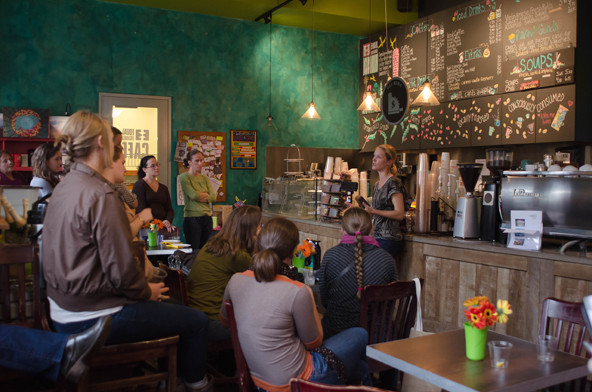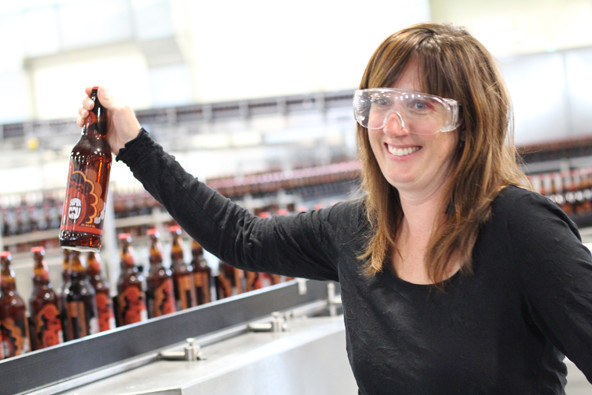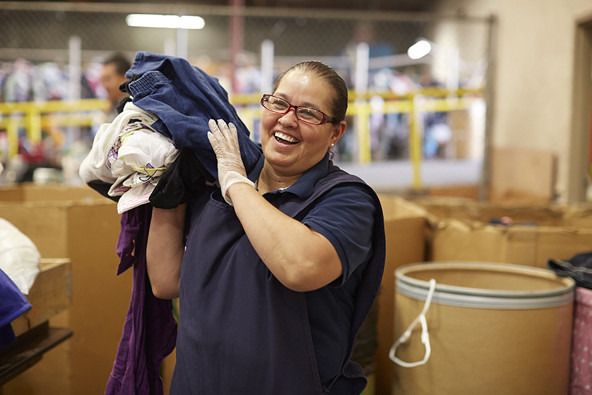It’s a sign of the times that the second-largest US foundation, the Ford Foundation, announced earlier this year that it was reorienting its entire portfolio of grants around a single goal: to disrupt the drivers of inequality. The topic of inequality is on everyone’s mind, including the Pope’s and Standard & Poor’s, which warned that, “income inequality in the US is dampening GDP growth.” Meanwhile, Democratic nominee Hillary Clinton has vowed to take on what a recent study by economist Emmanuel Saez describes as the starkest income divide in US history. A Congressional Budget Office report on inequality released recently found that the wealthiest 10 percent of Americans own two-thirds of the nation’s wealth.
But exactly how do we disrupt the drivers of inequality? A vital part of the answer is in the quiet ownership revolution now underway across the country. More and more community-development and city leaders are looking to inclusive ownership models that more evenly distribute wealth and assets throughout the wider community as tools to create jobs and build community wealth. These models are poised for greater use. It’s critical that community leaders, legislators, investors, financial advisors, and citizens better understand them, and that we align the philanthropic resources and impact investment capital needed to help drive them to scale.
One democratic model for inclusive, broad-based ownership is the worker cooperative, a form of community-rooted business whose ability to deliver higher pay for workers and greater job stability has caught the attention of many advocates for low-income communities. The nonprofit Prospera in California’s San Francisco Bay Area, for example, has incubated a network of worker-owned cooperatives, where most worker-owners are Latina women working in housekeeping. By joining the Prospera worker cooperatives, these workers raised their median income from $24,000 to $40,989; shared control of the cooperative enabled them to influence their own wages.
Worker cooperatives are not always small companies. The nation’s largest worker co-op is Cooperative Home Health Care Associates (CHCA) in New York, which has revenues of $60 million and employs 2,300 people, many of them women of color. The company’s mission is to provide quality home health care at living wages. This company also makes a point of reaching out to low-income and unemployed women, every year offering 600 of these women free training in being a home health aide and giving these women a shot at a job with the company.
 Fair trade coffee distributer, Massachusetts-based Equal Exchange has pioneered the sale of preferred shares to impact investors to bring $16 million in financing to worker cooperatives.
Fair trade coffee distributer, Massachusetts-based Equal Exchange has pioneered the sale of preferred shares to impact investors to bring $16 million in financing to worker cooperatives.
Are you enjoying this article? Read more like this, plus SSIR's full archive of content, when you subscribe.
The success of CHCA and other worker co-ops in New York helped lead the city council to recently allocate $3.3 million over two years to develop more worker cooperatives. Other cities taking similar steps include Austin, Texas, and Madison, Wisconsin.
Firms with employee stock ownership plans (ESOPs) compose another category of broad-based ownership. One of the most successful is Recology in San Francisco. The company brings in $800 million in revenue and is 100 percent owned by its 3,000 employees, who perform waste collection and recycling services for tens of thousands of households and businesses in four states. Visit Recology, as I did not long ago, and you’ll find remarkable pride of workmanship. The company even has an artist-in-residence program, where visiting artists turn waste into art. The company grounds in San Francisco feature a sculpture garden where all the art is from reclaimed materials. Workers at this facility earn $20 to $29 an hour, and company truck drivers make more than $50,000 annually.
 When many craft breweries where selling to multi-nationals, New Belgium Brewery transitioned to full ESOP ownership in 2012, it was a significant step towards remaining independent and sharing wealth.
When many craft breweries where selling to multi-nationals, New Belgium Brewery transitioned to full ESOP ownership in 2012, it was a significant step towards remaining independent and sharing wealth.
This kind of employee ownership is far from marginal. For instance, few people know that worker-owners today own close to $1 trillion in company equity. According to the National Center for Employee Ownership, that wealth primarily belongs to the nation’s 6,795 company ESOPs, which are essentially retirement trust funds covering more than 10 million employees. Through this powerful model, employees enjoy an ownership stake, as well as higher wages and larger retirement accounts, while their companies see increased productivity and higher profitability. Yet despite the proven success of the ESOP model over decades—and the established (and substantial) tax benefits for owners selling to ESOPs—this model remains oddly absent from national policy debates on inequality.
Nonprofit-owned social enterprises are another inclusive ownership model, as they have a built-in mission of broad community benefit. A significant number of nonprofit social enterprises are aimed at benefitting those excluded from economic prosperity. DC Central Kitchen in Washington, DC, trains and employs a range of people with barriers to employment, including the chronically unemployed, victims of abuse, and the formerly incarcerated. Its culinary training program has maintained a 90 percent placement rate, placing more than 1,200 jobless adults in culinary industry jobs. Among the formerly incarcerated, these culinary graduates have an average recidivism rate of only 2 percent—far lower than the typical rate of 50 percent or more. Because nonprofit social enterprises like these are legally incorporated to serve their community, broad and inclusive benefit is core to their functioning.
 One of the nation’s most prominent social enterprise accelerators is REDF, which has supported more than 60 social enterprises, helping to create more than 11,000 jobs.
One of the nation’s most prominent social enterprise accelerators is REDF, which has supported more than 60 social enterprises, helping to create more than 11,000 jobs.
An important part of moving this kind of work from the edges of conversation around inequality to the center is making sure we put resources in place to help take inclusive models to scale. Our new Democracy Collaborative handbook, funded by Citi Community Development, outlines some of the most promising avenues for assembling the capital necessary to expand these kinds of business development and conversion strategies. For example, Community Development Finance Institutions (CDFIs)—which are chartered to aid disadvantaged communities and number roughly 1,000 throughout the United States—have substantial untapped potential for funding broad-based ownership. A few CDFIs are forging the path, showing others how they might increase this kind of lending. Some municipal governments, like New York City, are leading the way to greater employee ownership by committing funds to developing worker-cooperatives—an approach many cities could replicate.
As American baby boomer entrepreneurs age and think about transitioning ownership of the 7 million privately held enterprises they own, there is enormous potential for converting these businesses to worker ownership. According to the National Association of Certified Valuators and Analysts, more than $10 trillion worth of businesses will change hands over the next 10 years from baby boomers alone. Transitioning them to employee ownership would allow business owners to enjoy tax benefits, preserve their legacy in their communities, and contribute to a flourishing, locally rooted economy.
Finance has a critical role to play in growing this vital tool for disrupting the drivers underlying economic inequality. The largest banks can join the nation’s foundations, nonprofits, and city leaders as allies in this work, since these banks are already committed to invest in America’s poorest communities under the framework of the 1977 Community Reinvestment Act. Our hope is that more and more players will join together in taking these kind of pragmatic, game-changing solutions to scale.
Support SSIR’s coverage of cross-sector solutions to global challenges.
Help us further the reach of innovative ideas. Donate today.
Read more stories by Marjorie Kelly.

